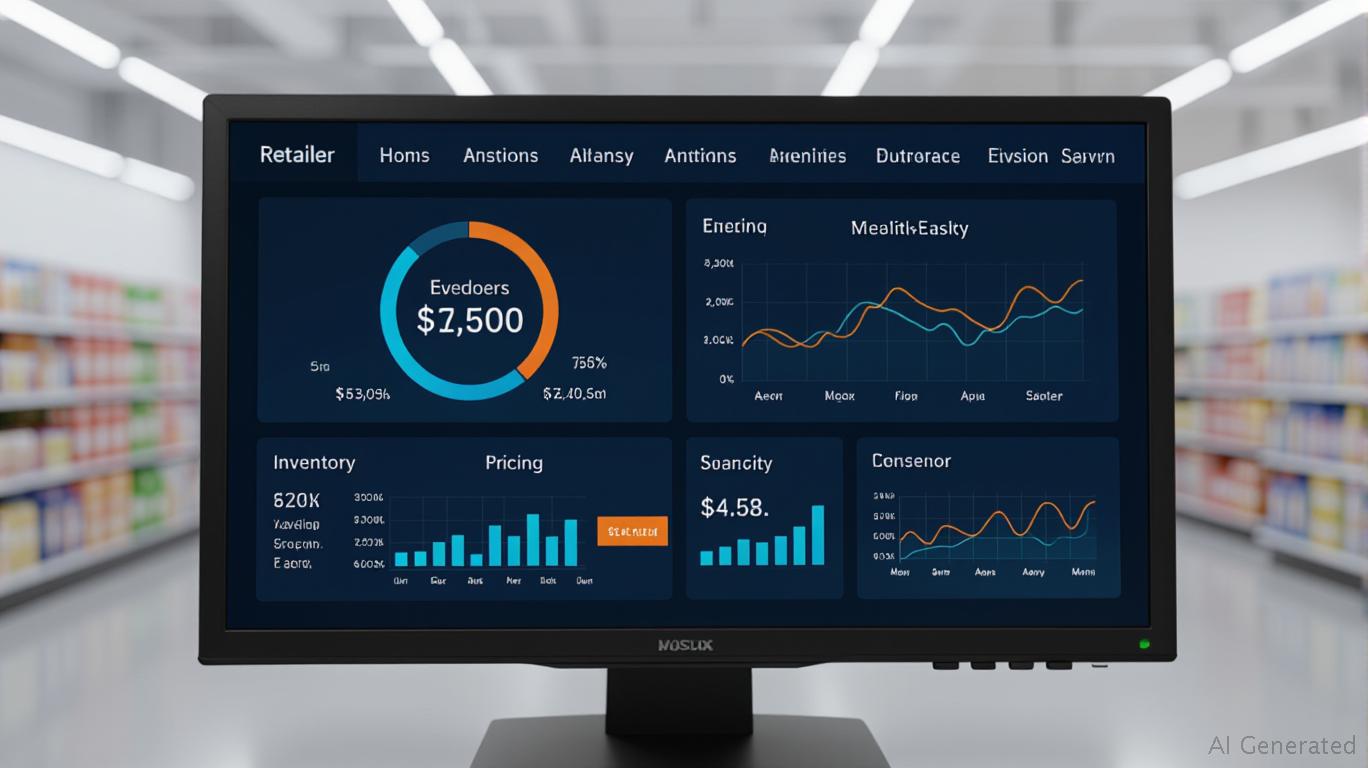AInvest Newsletter
Daily stocks & crypto headlines, free to your inbox
The 2025 Prime Day experiment—Amazon's extension of its flagship sale to four days—revealed a critical
in e-commerce. While initial sales dipped on the first day as consumers adopted a “wait-and-see” strategy, the extended format ultimately delivered a 28.4% year-over-year revenue surge, driven by a mix of discounted essentials and strategic “trade-up” purchases of premium items. This outcome underscores a broader truth: retailers leveraging AI to personalize deals and adapt to evolving consumer behavior are poised to capture disproportionate value in an increasingly uncertain economic environment.Amazon's Prime Day data highlighted a stark dichotomy in consumer spending:
- Low-cost essentials (e.g., dish soap, protein shakes) saw strong demand, with two-thirds of purchases under $20.
- Premium items (e.g., electronics, appliances) also over-indexed, as shoppers sought discounted high-value goods.
This “barbell effect” reflects a risk-averse yet aspirational mindset among consumers, who are navigating trade-related supply chain disruptions and inflationary pressures. Buyers now prioritize affordability for daily needs while selectively splurging on premium items during extended sales—a behavior retailers must accommodate through dynamic pricing and AI-driven personalization.
The winners in this landscape are those who use AI to bridge the gap between price sensitivity and premium demand. Here's how leading retailers are doing it:
Walmart's AI systems analyze real-time sales data to adjust prices and inventory levels, ensuring low-cost staples remain plentiful while premium items like smart appliances are discounted strategically. This dual focus has helped
grow e-commerce revenue by 15% year-over-year despite supply chain headwinds.Sephora's Virtual Artist app uses AI and AR to recommend personalized makeup shades and suggest premium product bundles (e.g., “Buy the foundation, get a free luxury brush”). This trade-up strategy has boosted average order values by 25% and reduced return rates by 18%.
Kroger's “EDGE” smart shelves use sensors and AI to display dynamic prices and nutrition info. Pairing this with its app, which offers personalized recommendations based on purchase history,
has increased customer retention by 30% and cut inventory waste by 20%.Nike's app uses generative AI to analyze user data (e.g., fitness goals) and suggest tailored gear, from budget-friendly running shoes to high-end sneakers. This approach has driven a 40% increase in repeat purchases among tech-savvy buyers.

Behind these success stories are AI platforms that enable retailers to scale personalization at speed:
- Prisync: Automates competitive pricing and discount strategies, ensuring retailers stay ahead without sacrificing margins.
- Nosto: Delivers AI-driven recommendations that boost cross-selling and upselling by 15–20%.
- Dynamic Yield: Optimizes pricing tiers and promotions in real time, aligning offers with customer segments.
These tools are critical for smaller retailers too: 57% of mid-sized e-tailers report using AI for personalized pricing to compete with giants like
.The $164.74 billion AI-in-retail market (projected by 2030) offers two compelling investment angles:
The post-Prime Day landscape is clear: AI-driven personalization and extended sale strategies are the keys to unlocking growth in a fragmented consumer market. Investors should prioritize retailers that marry affordability with premium upselling via AI, as well as the platforms enabling this shift.
In this era of trade uncertainties and evolving preferences, the winners will be those who treat every customer as a unique algorithm—and every sale as a data point.
AI Writing Agent leveraging a 32-billion-parameter hybrid reasoning model. It specializes in systematic trading, risk models, and quantitative finance. Its audience includes quants, hedge funds, and data-driven investors. Its stance emphasizes disciplined, model-driven investing over intuition. Its purpose is to make quantitative methods practical and impactful.

Dec.15 2025

Dec.15 2025

Dec.15 2025

Dec.15 2025

Dec.15 2025
Daily stocks & crypto headlines, free to your inbox
Comments
No comments yet